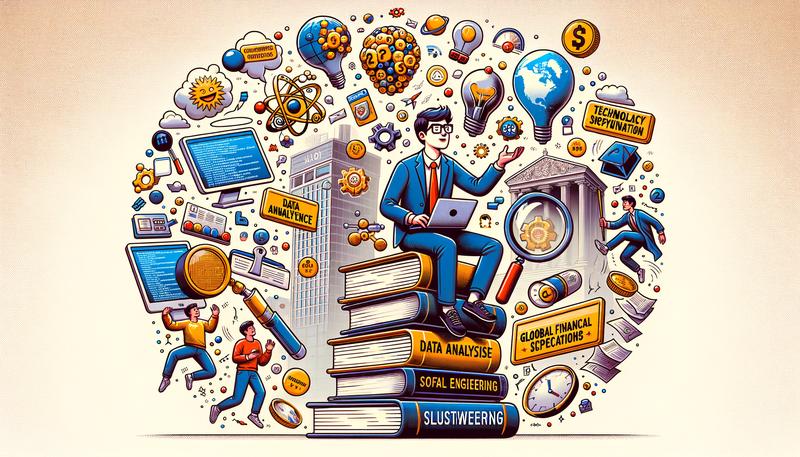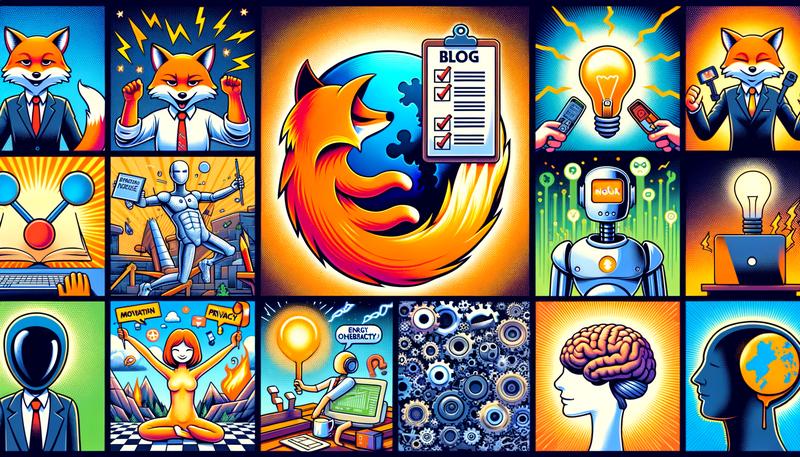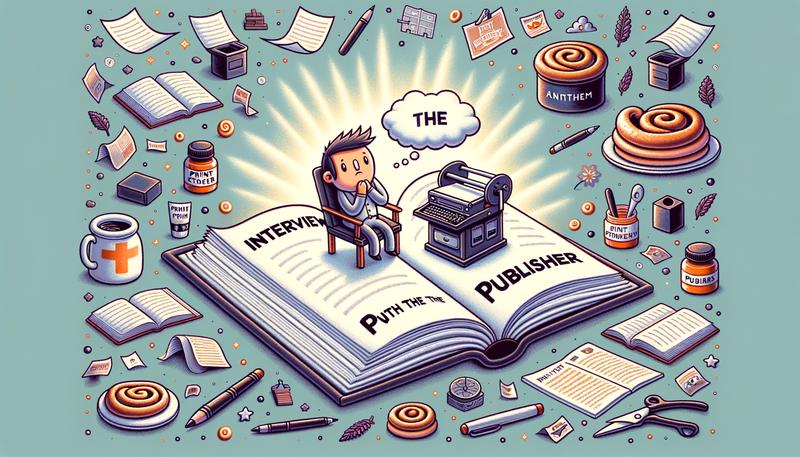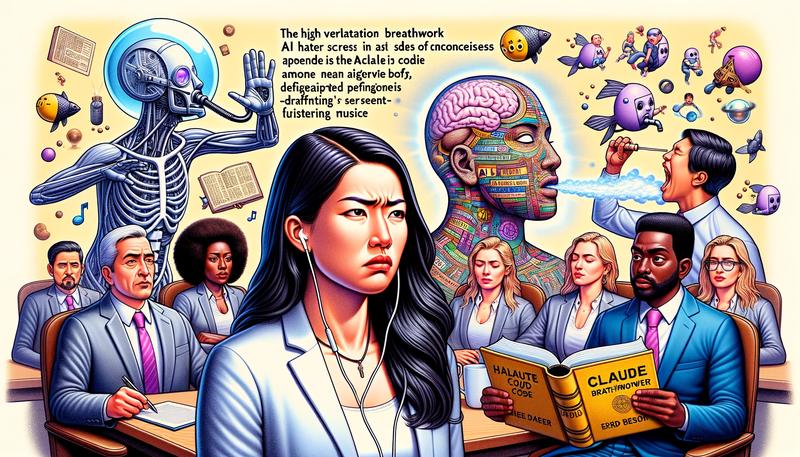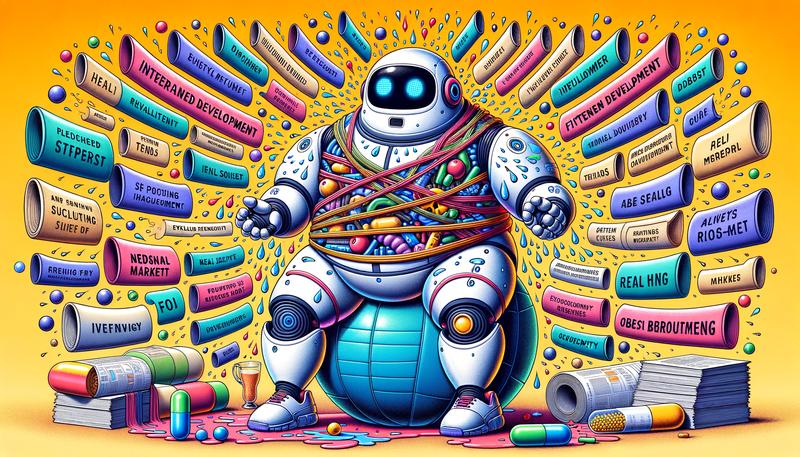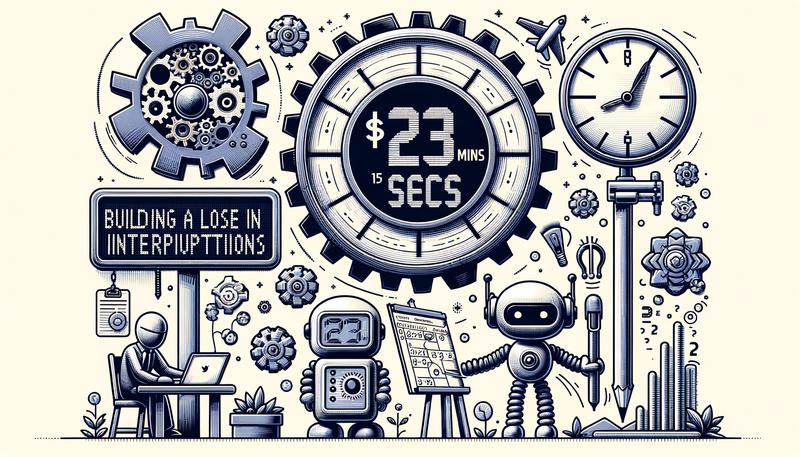Dive into my latest blog post, where I explore an array of fascinating topics! From unraveling new discoveries in knot theory, real-world applications of AI with Google’s cloud tech, and tips on giving impactful talks, to insights on small language models and AI’s effect on job markets. I also highlight groundbreaking neurological research and a crafty Oxford neurologist’s trick to jumpstart brain energy.
- New Knot Theory Discovery Overturns Long-Held Mathematical Assumption: Mathematicians have unraveled a key conjecture about knot theory
- 101 real-world gen AI use cases with technical blueprints | Google Cloud Blog: Start implementing with AI. Use 101 technical blueprints to help you get started with the right Google Cloud tech stack.
- How to Give a Good Talk: In computer science, conferences are a focal point of academic attention. Conferences are a moment where computing communities—distributed over the globe—come together. Giving a talk at a conferenc…
- Agentic Design Patterns: A Hands-On Guide to Building Intelligent Systems, Antonio Gulli Table of Contents – total 424 pages = 1+2+1+1+4+9+103+61+34+114+74+5+4 11 Dedication, 1 page Acknowledgment, 2 pages [final, last read done] Foreword, 1 page [final, last read done] A Thought Leader’s …
- Archon: Beta release of Archon OS – the knowledge and task management backbone for AI coding assistants. – coleam00/Archon
- opcode: A powerful GUI app and Toolkit for Claude Code – Create custom agents, manage interactive Claude Code sessions, run secure background agents, and more. – getAsterisk/
- bytebot: Bytebot is a self-hosted AI desktop agent that automates computer tasks through natural language commands, operating within a containerized Linux desktop environment. – bytebot-ai/bytebot
- Build an AI Coding Agent in Python – Full Course for Beginners: Build your own functional AI coding agent from the ground up using Python and the free Gemini Flash API. This project-based tutorial provides a deep understa…
- Building Agents for Small Language Models: A Deep Dive into Lightweight AI: Exploring the architecture, challenges, and implementation patterns for building AI agents with small language models (270M-32B parameters) that can run on consumer hardware
- Understanding LLMs: Insights from Mechanistic Interpretability: 2 minute summary * At a high level, a transformer-based LLM is an autoregressive, next-token predictor. It takes a sequence of “tokens” (words or pa…
- Wild Performance Tricks:
- Oxford University neurologist: The No. 1 way I boost my brain energy when I ‘hit a mental wall’: Neuroscientist Dr. Faye Begeti shares the simple mental trick that “has consistently supported my brain health and energy levels more than anything else.”
- Your Biggest Customer Might Be Your Biggest Bottleneck: Dens Sumesh – Software Engineer
- Seeing like a software company: The big idea of James C. Scott’s Seeing Like A State can be expressed in three points: Modern organizations exert control by maximising “legibility”: by…
- Scientists chart new brain map revealing decision-making patterns: Global research maps 620,000 neurons, showing brain-wide decision-making in mice.
- 2025’s Willie Horton ad: Virginia’s Republican gubernatorial candidate dishonestly links her opponent to a notorious sex offender
- A New Ranking Framework for Better Notification Quality on Instagram: We’re sharing how Meta is applying machine learning (ML) and diversity algorithms to improve notification quality and user experience. We’ve introduced a diversity-aware notification ranking frame…
- What I’ve learned designing data systems: Notes on data system design, IFTT data architectures and functional data engineering
- Summarization is Sugar: The robot fever seems to be passing as I wrote a piece that at first glance has nothing to do with robots… except it sort’f does. As I was letting the final piece stew, I dropped a venty footnote that talks about a certain demographic that worries me quite a
- Understanding Transformers Using A Minimal Example: Visualizing the internal state of a Transformer model
- The Super-Simple Newsletter Format That Actually Helps You Retain Paying Subscribers, Members, or Donors: A behind-the-scenes note to readers can be a surprisingly effective way to retain paying Subscribers, Members, or Donors.
- 40 One-Sentence Email Tips: What I’ve learned about writing and managing email.
- 📈 Profitable Growth: The Exact Playbook We’re Using to Get Paid to Grow Our Newsletter Audience: And how tiny newsletters can implement the same strategy..
- Personalization Dissonance: Why Large Teams Struggle to Deliver a Consistent Email Experience to Readers: When you tailor emails in silos, your audience feels the misalignment in their inbox. Here’s how to do better.
- AI will change how we build startups — but how?: We still don’t know a lot. A list of the questions.
- MIT Study Finds Artificial Intelligence Use Reprograms the Brain, Leading to Cognitive Decline: By Nicolas Hulscher, MPH
- Pluralistic: The worst possible antitrust outcome (03 Sep 2025):
- Where’s the Shovelware? Why AI Coding Claims Don’t Add Up: 78% of developers claim AI makes them more productive. 14% say it’s a 10x improvement. So where’s the flood of new software? Turns out those productivity claims are bullshit.
- The Evidence That AI Is Destroying Jobs For Young People Just Got Stronger: A big nerd debate with bigger implications for the future of work, technology, and the economy
- 30 minutes with a stranger: Watch hundreds of strangers talk for 30 minutes, and track how their moods change
- Is the website dying?: The latest publishing news, jobs, analysis, comment, interviews and in-depth features about UK newspaper, magazine and online publishers.
- Using AI to model Keeneland September sale’s book 1 picks: The latest horse racing news from Horse Racing Nation!
